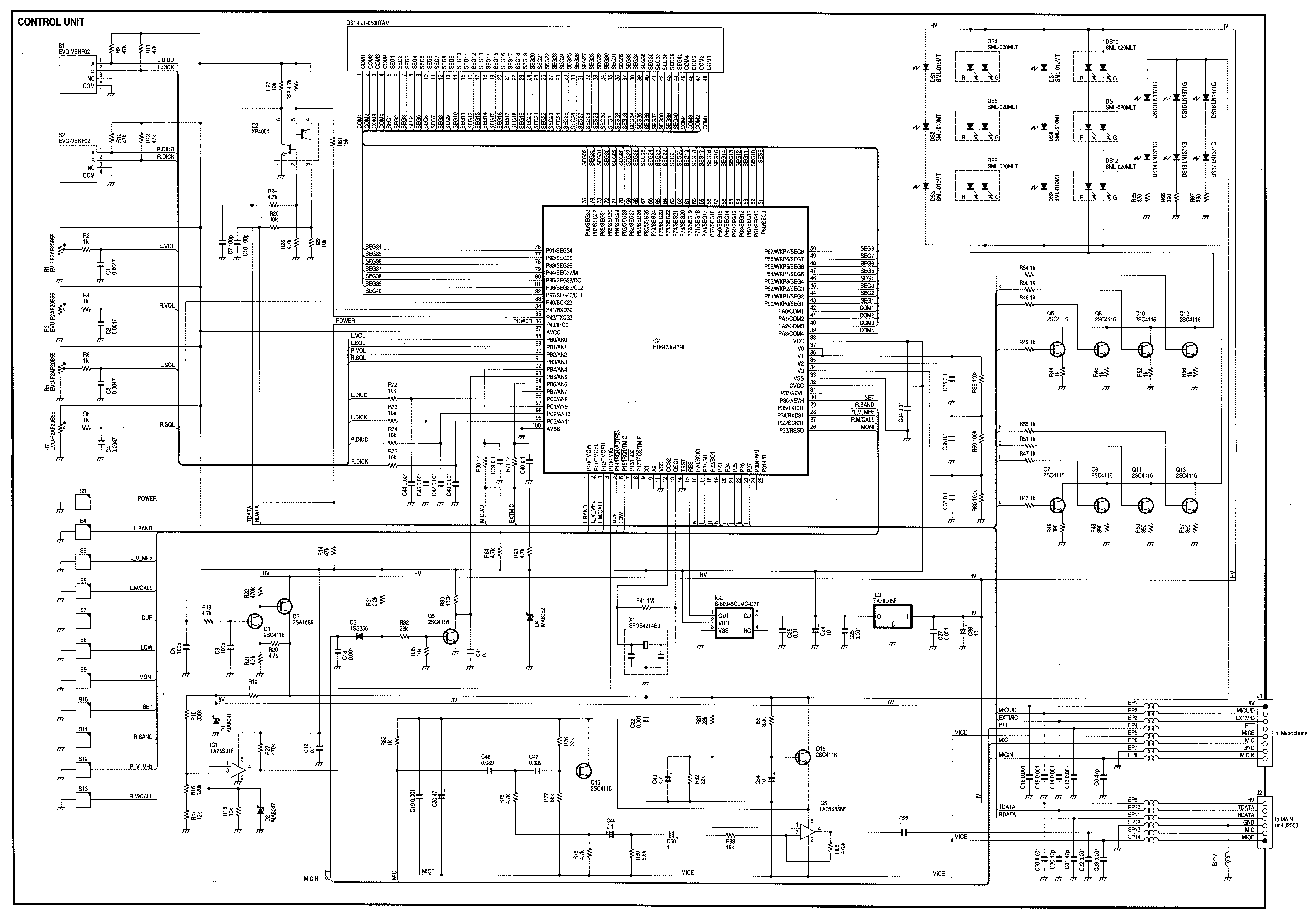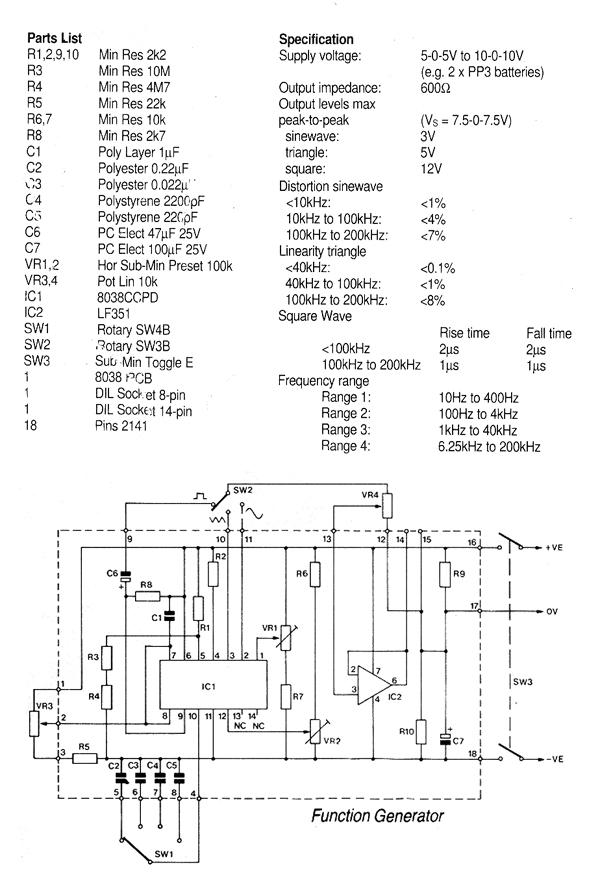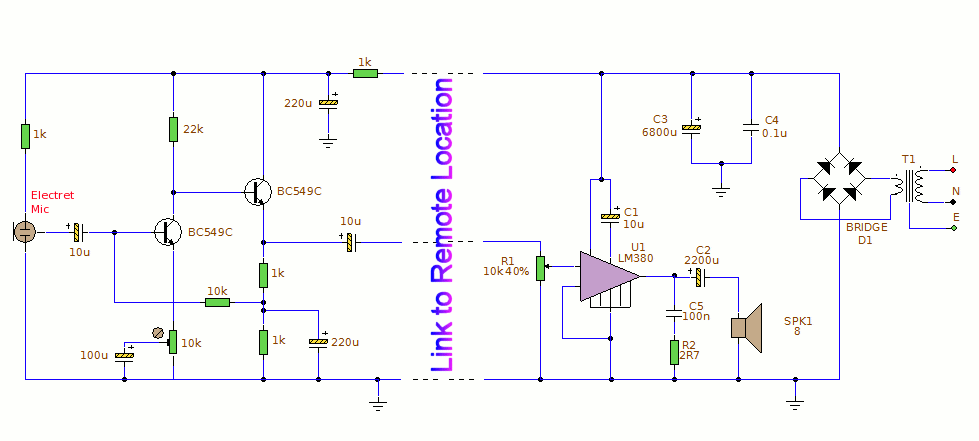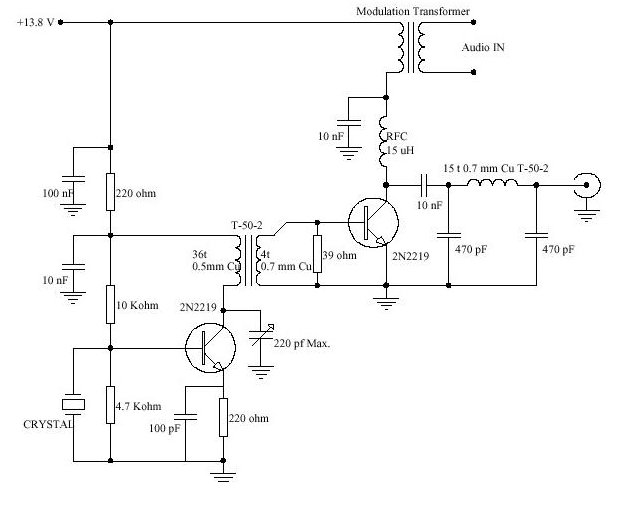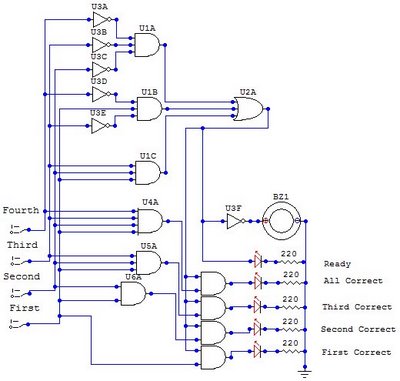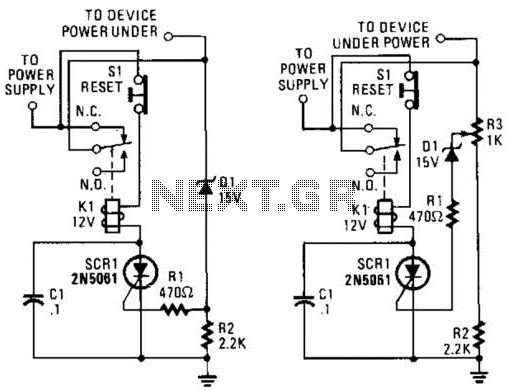
Telephony DTMF Circuits
This circuit can manage nine independent telephones using a single telephone line pair located at nine different locations. It functions as a bidirectional telephone line simulator without the need for actual telephone lines, allowing for coupling, testing, and demonstration of various types of telephone equipment such as answering machines, modems, faxes, call recorders, call diverters, extension ringers, telephone ring boosters, and security autodialers. Additionally, it couples modem-equipped PCs for gaming or testing communications software. Cordless phones, which operate in the 30-50 MHz frequency range, utilize FM modulation and can be easily received by any FM receiver. DTMF generation is accomplished using a 3.58 MHz crystal, where two audio tone frequencies corresponding to the rows (low band frequency) and columns (high band frequency) of a pushbutton touch-tone telephone keypad are selected and combined. The MV5089 chip, fabricated using ISO-CMOS high-density technology, provides low power consumption and wide voltage operation. An inexpensive 3.58 MHz TV crystal serves as the reference oscillator, generating eight different sinusoidal frequencies that, when mixed correctly, produce Dual-Tone Multi-Frequency (DTMF) tones. A DTMF tone decoder with an LCD display is included in the project, which decodes telephone numbers from tones picked up by a microphone, amplified by a preamplifier, and processed by an SSI-202 DTMF chip. A Basic Stamp microcontroller interfaces with the LCD display and provides RS-232 serial output. The circuit also includes a telephone line in-use indicator, which connects to a telephone line to visually indicate whether the line is in use, helping multiple users to avoid interrupting each other's calls. Furthermore, the document outlines telephone line audio interface circuits, network interfaces for telephones, telecom hybrid circuits for devices other than telephones, and various audio interfaces to telephone lines. It also covers issues related to telephone hybrid circuits, helpful tips for designers, component selection for telephone line interfacing, technical details of telephone lines in different countries, and interference in telephone line signals. Lastly, a circuit that connects in parallel to a telephone displays the dialed number using the DTMF mode, and it can also show the number dialed from the called party's phone.
The circuit design described incorporates a multi-telephone management system that can efficiently handle multiple telecommunication devices over a single line. Each telephone unit is connected to a central circuit that simulates the telephone line, allowing for the testing and demonstration of various telecommunication equipment without the need for physical telephone lines. This is particularly useful in educational settings or for developers testing new devices.
The DTMF generation aspect of the circuit utilizes the MV5089 IC, which is essential for generating the dual-tone signals required for modern telephone communication. The integration of a 3.58 MHz crystal oscillator is critical, as it provides the necessary frequency stability for accurate tone generation. The generated tones correspond to the keypad layout of a standard touch-tone telephone, facilitating seamless interaction with telephone networks.
In addition to the tone generation, the design includes an effective DTMF decoder that processes incoming signals from the telephone line. The SSI-202 chip plays a pivotal role in decoding the DTMF signals, converting them into readable data that can be displayed on an LCD screen. This feature enhances the usability of the system by providing immediate feedback on the dialed numbers, which is particularly advantageous in environments where multiple users may be interacting with the system simultaneously.
The inclusion of a visual indicator for line usage is another significant feature, as it prevents conflicts during calls. This indicator can be implemented using simple LED circuitry that activates when the line is occupied, providing a straightforward solution to a common issue in shared telephone environments.
Overall, this circuit design encompasses a comprehensive approach to managing and interfacing multiple telephone devices, integrating essential components for tone generation, decoding, and user interaction, while addressing practical concerns related to shared telephone line usage.This circuit is able to handle nine independent telephones (using a single telephone line pair) located at nine different locations, PDF Bidirectional telephone line simulator without using telephone lines, couple, test and demonstrate all types of telephone equipment such as: answering machine, modem, fax, call recorder, call diverter, extension ringer, telephone ring booster, security autodialler etc. Couple modem equipped PCs for gaming or testing of communications software Cordless phone frequencies cordless phones are still analogue and use the frequency from 30-50MHz. The signal is FM-modulated and can easy be picked up with any FM-receiver DTMF Generation with a 3. 58 MHz Crystal DTMF generation consists of selecting and combining two audio tone frequencies associated with the rows (low band frequency) and columns (high band frequency) of a pushbutton touch tone telephone keypad, PDF DTMF Generator The MV5089 is fabricated using ISO-CMOS high density technology and offers low power and wide voltage operation.
An inexpensive 3. 58MHz TV crystal completes the reference oscillator. From this frequency are derived 8 different sinusoidal frequencies which, when appropriately mixed, provide Dual-Tone Multi-Frequency (DTMF) tones, PDF DTMF tone decoder with LCD display this project displays telephone numbers decoded from tones. A microphone picks up the tones, a preamplifier boosts the signals, an SSI-202 DTMF chip decodes the tones, a Basic Stamp acts as an interface to an LCD display and also provides "RS-232" serial output Telephone Line In Use Indicator This document presents a design for an electronic circuit which connects to a telephone line and provides a visual indication of whether or not the line is in use, so that two or more people sharing a line can avoid interrupting each other`s voice or modem calls Telephone line audio interface circuits How telephone works, Network Interface in telephone, Telecom hybrid circuits for other equipments than telephones, Audio interfaces to telephone lines, Telephone audio interfaces from Usenet news, Audio interfaces without transformer isolation, Simple telecom hybrid circuits, More details implementing telephone line interface, Problems in linking telephone hybrid to audio system, Helpful tips for telephone hybrid circuit designers, Connecting hybrids and telephone equipments, Components for telephone line interfacing, Telephone line technical details, Telephone line details in different countries, Interference in the telephone line signal Telephone Number Display The given circuit, when connected in parallel to a telephone, displays the number dialled from the telephone set using the DTMF mode.
This circuit can also show the number dialled from the phone of the called party, PDF 🔗 External reference
The circuit design described incorporates a multi-telephone management system that can efficiently handle multiple telecommunication devices over a single line. Each telephone unit is connected to a central circuit that simulates the telephone line, allowing for the testing and demonstration of various telecommunication equipment without the need for physical telephone lines. This is particularly useful in educational settings or for developers testing new devices.
The DTMF generation aspect of the circuit utilizes the MV5089 IC, which is essential for generating the dual-tone signals required for modern telephone communication. The integration of a 3.58 MHz crystal oscillator is critical, as it provides the necessary frequency stability for accurate tone generation. The generated tones correspond to the keypad layout of a standard touch-tone telephone, facilitating seamless interaction with telephone networks.
In addition to the tone generation, the design includes an effective DTMF decoder that processes incoming signals from the telephone line. The SSI-202 chip plays a pivotal role in decoding the DTMF signals, converting them into readable data that can be displayed on an LCD screen. This feature enhances the usability of the system by providing immediate feedback on the dialed numbers, which is particularly advantageous in environments where multiple users may be interacting with the system simultaneously.
The inclusion of a visual indicator for line usage is another significant feature, as it prevents conflicts during calls. This indicator can be implemented using simple LED circuitry that activates when the line is occupied, providing a straightforward solution to a common issue in shared telephone environments.
Overall, this circuit design encompasses a comprehensive approach to managing and interfacing multiple telephone devices, integrating essential components for tone generation, decoding, and user interaction, while addressing practical concerns related to shared telephone line usage.This circuit is able to handle nine independent telephones (using a single telephone line pair) located at nine different locations, PDF Bidirectional telephone line simulator without using telephone lines, couple, test and demonstrate all types of telephone equipment such as: answering machine, modem, fax, call recorder, call diverter, extension ringer, telephone ring booster, security autodialler etc. Couple modem equipped PCs for gaming or testing of communications software Cordless phone frequencies cordless phones are still analogue and use the frequency from 30-50MHz. The signal is FM-modulated and can easy be picked up with any FM-receiver DTMF Generation with a 3. 58 MHz Crystal DTMF generation consists of selecting and combining two audio tone frequencies associated with the rows (low band frequency) and columns (high band frequency) of a pushbutton touch tone telephone keypad, PDF DTMF Generator The MV5089 is fabricated using ISO-CMOS high density technology and offers low power and wide voltage operation.
An inexpensive 3. 58MHz TV crystal completes the reference oscillator. From this frequency are derived 8 different sinusoidal frequencies which, when appropriately mixed, provide Dual-Tone Multi-Frequency (DTMF) tones, PDF DTMF tone decoder with LCD display this project displays telephone numbers decoded from tones. A microphone picks up the tones, a preamplifier boosts the signals, an SSI-202 DTMF chip decodes the tones, a Basic Stamp acts as an interface to an LCD display and also provides "RS-232" serial output Telephone Line In Use Indicator This document presents a design for an electronic circuit which connects to a telephone line and provides a visual indication of whether or not the line is in use, so that two or more people sharing a line can avoid interrupting each other`s voice or modem calls Telephone line audio interface circuits How telephone works, Network Interface in telephone, Telecom hybrid circuits for other equipments than telephones, Audio interfaces to telephone lines, Telephone audio interfaces from Usenet news, Audio interfaces without transformer isolation, Simple telecom hybrid circuits, More details implementing telephone line interface, Problems in linking telephone hybrid to audio system, Helpful tips for telephone hybrid circuit designers, Connecting hybrids and telephone equipments, Components for telephone line interfacing, Telephone line technical details, Telephone line details in different countries, Interference in the telephone line signal Telephone Number Display The given circuit, when connected in parallel to a telephone, displays the number dialled from the telephone set using the DTMF mode.
This circuit can also show the number dialled from the phone of the called party, PDF 🔗 External reference
Warning: include(partials/cookie-banner.php): Failed to open stream: Permission denied in /var/www/html/nextgr/view-circuit.php on line 713
Warning: include(): Failed opening 'partials/cookie-banner.php' for inclusion (include_path='.:/usr/share/php') in /var/www/html/nextgr/view-circuit.php on line 713
